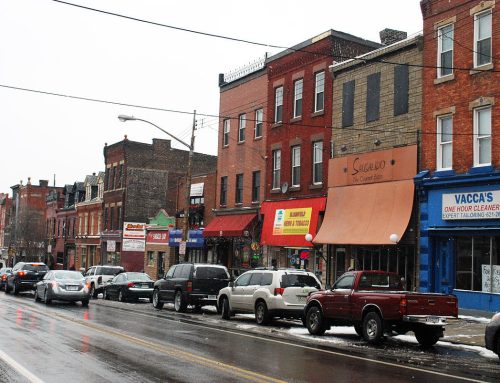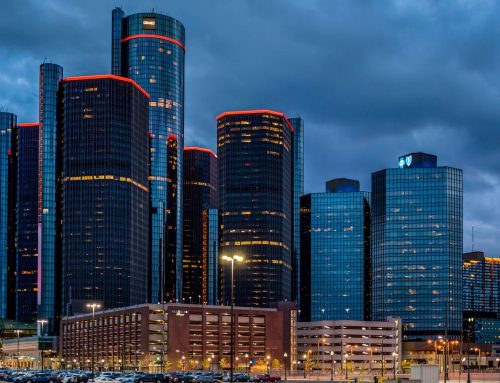By Allison Schuette
When does the familiar, the geography of our present, so taunt-
ingly real as to feel permanent, expose itself as the planned, the
……………..geography of imagination, marks on a financier’s page,
……………..an acquiring industrialist’s claim toward permanence, aspiring
to be made real? In the 1850s, the Michigan Southern
and Northern Indiana Railroad connected Monroe, Michigan,
……………..to Chicago, Illinois. Twenty years later, competing Eastern
……………..Seaboard interests laid their own way west, adding ties to the Baltimore
and Ohio line. The tracks intersected at Miller’s Station
in Indiana where, in 1889, a man stands, balancing,
……………..one foot on one line and the other on another, touching the pulse
……………..of two emergent powers (themselves bought and sold, incorporated
and consolidated) as they reshape the landscape of a country,
forge their vision of a nation. There are near days to come of sand and
……………..ice leaving Miller for Chicago; there are far days to come in which
……………..Miller loses its will to resist the City of the Century
(Gary covets its neighbor’s lakefront) and votes for annexation; there
are days beyond that of blacks fighting to desegregate Marquette Park,
……………..days beyond that of the “Miller Mafia” organizing to stem
……………..the tide of whites fleeing to Merrillville and Munster, days beyond that
of an eroded tax base when the tide could not be stemmed, of auto-
mation and globalization, the deindustrialization
……………..of the mills, of neighborhood pride and Miller residents cleaning their
……………..own parks, of tension with downtown over where city funding lands, of
an arts center and a brew pub and a juice bar and murals and hip-
sters from Chicago who want cheap housing (and at least one resident
……………..lashing back at the backlash, What’s so wrong with gentrification?), of
……………..section 8 apartments and million-dollar mansions, of contested
territory and talk of de-annexation, of residents laying
down the facts like railroad tracks. Even well laid plans derail. ■
 This story was produced in partnership with Indiana Humanities’ INseparable project. Read more stories in the series here.
This story was produced in partnership with Indiana Humanities’ INseparable project. Read more stories in the series here.
Allison Schuette is a writer interested in documenting lives in a variety of mediums and genres. An Associate Professor at Valparaiso University, she also co-directs the Welcome Project, an online, digital story collection used to foster conversations about community life and civic engagement. Her written work has appeared in Michigan Quarterly Review, Gulf Coast Review, Mid-American Review, and other journals.
Cover image: “Baltimore and Ohio and Lake Shore and Michigan Southern Crossing, Miller, 1889.” Photo courtesy Calumet Regional Archives, Indiana University Northwest.
Belt Magazine is a 501(c)(3) nonprofit organization. To support more independent writing and journalism made by and for the Rust Belt and greater Midwest, make a donation to Belt Magazine, or become a member starting at $5 per month.






